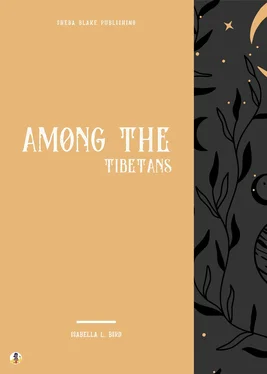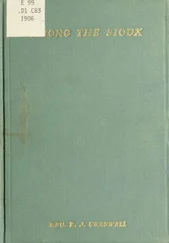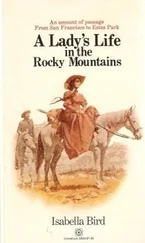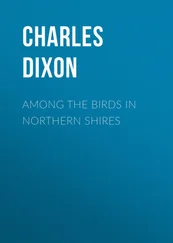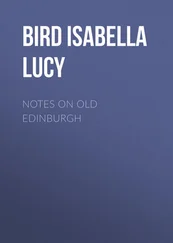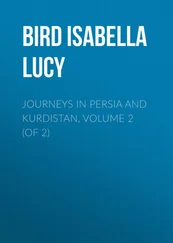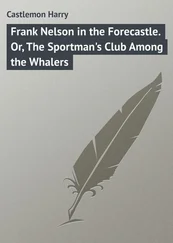Mr. Maconochie of the Panjab Civil Service, and Dr. E. Neve of the C. M. S. Medical Mission in Kashmir, accompanied me from Sonamarg over the pass, and that night Mr. M. talked seriously to Usman Shah on the subject of his misconduct, and with such singular results that thereafter I had little cause for complaint. He came to me and said, ‘The Commissioner Sahib thinks I give Mem Sahib a great deal of trouble;’ to which I replied in a cold tone, ‘Take care you don’t give me any more.’ The gist of the Sahib’s words was the very pertinent suggestion that it would eventually be more to his interest to serve me honestly and faithfully than to cheat me.
Baltal lies at the feet of a precipitous range, the peaks of which exceed Mont Blanc in height. Two gorges unite there. There is not a hut within ten miles. Big camp-fires blazed. A few shepherds lay under the shelter of a mat screen. The silence and solitude were most impressive under the frosty stars and the great Central Asian barrier. Sunrise the following morning saw us on the way up a huge gorge with nearly perpendicular sides, and filled to a great depth with snow. Then came the Zoji La, which, with the Namika La and the Fotu La, respectively 11,300, 13,000, and 13,500 feet, are the three great steps from Kashmir to the Tibetan heights. The two latter passes present no difficulties. The Zoji La is a thoroughly severe pass, the worst, with the exception perhaps of the Sasir, on the Yarkand caravan route. The track, cut, broken, and worn on the side of a wall of rock nearly 2,000 feet in abrupt elevation, is a series of rough narrow zigzags, rarely, if ever, wide enough for laden animals to pass each other, composed of broken ledges often nearly breast high, and shelving surfaces of abraded rock, up which animals have to leap and scramble as best they may.
Trees and trailers drooped over the path, ferns and lilies bloomed in moist recesses, and among myriads of flowers a large blue and cream columbine was conspicuous by its beauty and exquisite odour. The charm of the detail tempted one to linger at every turn, and all the more so because I knew that I should see nothing more of the grace and bounteousness of Nature till my projected descent into Kulu in the late autumn. The snow-filled gorge on whose abrupt side the path hangs, the Zoji La (Pass), is geographically remarkable as being the lowest depression in the great Himalayan range for 300 miles; and by it, in spite of infamous bits of road on the Sind and Suru rivers, and consequent losses of goods and animals, all the traffic of Kashmir, Afghanistan, and the Western Panjab finds its way into Central Asia. It was too early in the season, however, for more than a few enterprising caravans to be on the road.
The last look upon Kashmir was a lingering one. Below, in shadow, lay the Baltal camping-ground, a lonely deodar-belted flowery meadow, noisy with the dash of icy torrents tumbling down from the snowfields and glaciers upborne by the gigantic mountain range into which we had penetrated by the Zoji Pass. The valley, lying in shadow at their base, was a dream of beauty, green as an English lawn, starred with white lilies, and dotted with clumps of trees which were festooned with red and white roses, clematis, and white jasmine. Above the hardier deciduous trees appeared the Pinus excelsa, the silver fir, and the spruce; higher yet the stately grace of the deodar clothed the hillsides; and above the forests rose the snow mountains of Tilail, pink in the sunrise. High above the Zoji, itself 11,500 feet in altitude, a mass of grey and red mountains, snow-slashed and snow- capped, rose in the dewy rose-flushed atmosphere in peaks, walls, pinnacles, and jagged ridges, above which towered yet loftier summits, bearing into the heavenly blue sky fields of unsullied snow alone. The descent on the Tibetan side is slight and gradual. The character of the scenery undergoes an abrupt change. There are no more trees, and the large shrubs which for a time take their place degenerate into thorny bushes, and then disappear. There were mountains thinly clothed with grass here and there, mountains of bare gravel and red rock, grey crags, stretches of green turf, sunlit peaks with their snows, a deep, snow-filled ravine, eastwards and beyond a long valley filled with a snowfield fringed with pink primulas; and that was CENTRAL ASIA.
We halted for breakfast, iced our cold tea in the snow, Mr. M. gave a final charge to the Afghan, who swore by his Prophet to be faithful, and I parted from my kind escorts with much reluctance, and started on my Tibetan journey, with but a slender stock of Hindustani, and two men who spoke not a word of English. On that day’s march of fourteen miles there is not a single hut. The snowfield extended for five miles, from ten to seventy feet deep, much crevassed, and encumbered with avalanches. In it the Dras, truly ‘snow-born,’ appeared, issuing from a chasm under a blue arch of ice and snow, afterwards to rage down the valley, to be forded many times or crossed on snow bridges. After walking for some time, and getting a bad fall down an avalanche slope, I mounted Gyalpo, and the clever, plucky fellow frolicked over the snow, smelt and leapt crevasses which were too wide to be stepped over, put his forelegs together and slid down slopes like a Swiss mule, and, though carried off his feet in a ford by the fierce surges of the Dras, struggled gamely to shore. Steep grassy hills, and peaks with gorges cleft by the thundering Dras, and stretches of rolling grass succeeded each other. Then came a wide valley mostly covered with stones brought down by torrents, a few plots of miserable barley grown by irrigation, and among them two buildings of round stones and mud, about six feet high, with flat mud roofs, one of which might be called the village, and the other the caravanserai. On the village roof were stacks of twigs and of the dried dung of animals, which is used for fuel, and the whole female population, adult and juvenile, engaged in picking wool. The people of this village of Matayan are Kashmiris. As I had an hour to wait for my tent, the women descended and sat in a circle round me with a concentrated stare. They asked if I were dumb, and why I wore no earrings or necklace, their own persons being loaded with heavy ornaments. They brought children afflicted with skin- diseases, and asked for ointment, and on hearing that I was hurt by a fall, seized on my limbs and shampooed them energetically but not undexterously. I prefer their sociability to the usual chilling aloofness of the people of Kashmir.
The Serai consisted of several dark and dirty cells, built round a blazing piece of sloping dust, the only camping-ground, and under the entrance two platforms of animated earth, on which my servants cooked and slept. The next day was Sunday, sacred to a halt; but there was no fodder for the animals, and we were obliged to march to Dras, following, where possible, the course of the river of that name, which passes among highly-coloured and snow-slashed mountains, except in places where it suddenly finds itself pent between walls of flame- coloured or black rock, not ten feet apart, through which it boils and rages, forming gigantic pot-holes. With every mile the surroundings became more markedly of the Central Asian type. All day long a white, scintillating sun blazes out of a deep blue, rainless, cloudless sky. The air is exhilarating. The traveller is conscious of daily-increasing energy and vitality. There are no trees, and deep crimson roses along torrent beds are the only shrubs. But for a brief fortnight in June, which chanced to occur during my journey, the valleys and lower slopes present a wonderful aspect of beauty and joyousness. Rose and pale pink primulas fringe the margin of the snow, the dainty Pedicularis tubiflora covers moist spots with its mantle of gold; great yellow and white, and small purple and white anemones, pink and white dianthus, a very large myosotis, bringing the intense blue of heaven down to earth, purple orchids by the water, borage staining whole tracts deep blue, martagon lilies, pale green lilies veined and spotted with brown, yellow, orange, and purple vetches, painter’s brush, dwarf dandelions, white clover, filling the air with fragrance, pink and cream asters, chrysanthemums, lychnis, irises, gentian, artemisia, and a hundred others, form the undergrowth of millions of tall Umbelliferae and Compositae, many of them peach-scented and mostly yellow. The wind is always strong, and the millions of bright corollas, drinking in the sun-blaze which perfects all too soon their brief but passionate existence, rippled in broad waves of colour with an almost kaleidoscopic effect. About the eleventh march from Srinagar, at Kargil, a change for the worse occurs, and the remaining marches to the capital of Ladakh are over blazing gravel or surfaces of denuded rock, the singular Caprifolia horrida, with its dark-green mass of wavy ovate leaves on trailing stems, and its fair, white, anemone- like blossom, and the graceful Clematis orientalis, the only vegetation.
Читать дальше
